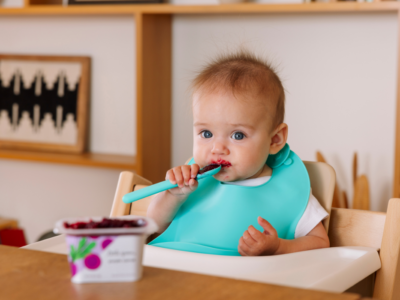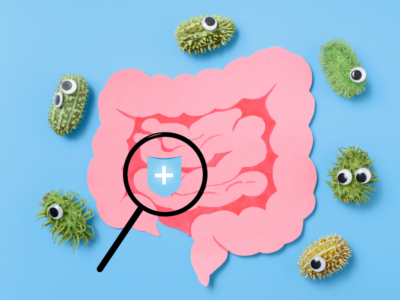Most parents say they are more stressed now than they were pre-pandemic for countless reasons.
Kids and teenagers seem more stressed and anxious, too. Pre-pandemic, the American Academy of Pediatrics reports that 43% of children between ages of 6 and 12 have a history of fears or concerns. Kids thrive in predictability and these are certainly unprecedented and unnerving times.
Discrimination and socio-political concerns including racial discrimination and violence disproportionately impact Black, Indigenous, and People of Color (BIPOC) families are adding to anxiety and stress. According to the 2020 Stress in America™ study, “One-third of adults (33%) cite discrimination as a significant source of stress in their life, a significant increase from 25% in 2019. Among people of color, more than 2 in 5 (44%) report discrimination is a significant source of stress in their life.”
When families are stressed and parents are overwhelmed, kids are more anxious too.
So what is anxiety? It includes cognitive (i.e., worried thoughts) and physiological (i.e., upset stomach, sweaty palms, heart racing) symptoms.
Given all these enormous concerns, how do you determine if your child is coping appropriately as you work to manage your own concerns?
First and foremost, pay attention to changes. You know your child best. Trust your parental instincts. Be on the lookout for changes in sleep, mood (either sadness or more often irritability), behavior, or academic performance, increase or decrease in appetite, or difficulties separating from you. These can all be signs your child may need extra support.
For parents I talk to, one of the hardest parts of managing kids’ difficulties is that we are all running on empty ourselves. It’s more challenging to take care of your child when your resources are already depleted. Think about the metaphor of putting on your own oxygen mask before you put on your child’s mask. Manage your stress first in whatever positive coping way you prefer. It’s also great to model for your kid that you use your own coping skills (i.e., taking a break, taking deep breaths, calling a friend, taking a walk). It is exponentially easier to take care of your child when you’re calm yourself, but don’t be discouraged when you inevitably aren’t calm. This is all hard.
How do you deal with anxiety for kids and what’s unique about this during this year?
- Work to identify worried thoughts and practice challenging them or proving them wrong. That often sounds like, “What’s the evidence for your worried thought?”
- Challenging worried thoughts can be much harder when there may truly be merit to your concerns. Still, it can be useful to help your child separate facts from feelings. For example: ‘Washing my hands for 20 second can help eliminate germs.’ vs. ‘I went outside, so now I feel the urge to shower.’
- Address the physical symptoms of anxiety using two complementary approaches:
- Learn relaxation to decrease those symptoms, including deep breathing, muscle relaxation, and mindfulness.
- Practice distress tolerance to learn to function with some level of anxiety. This is exposure therapy; not avoiding what you are anxious about and instead working to realize where you can tolerate those uncomfortable anxious feelings.
The DO’s and DON’Ts for Anxiety Management:
- DO: Increase structure/predictability wherever possible. Have a visual schedule of what to expect (i.e., with routines, school schedules, caregiver schedules).
- DON’T: Provide reassurance you cannot be sure of. When your child asks when will the pandemic be over, it’s okay to say you don’t know. DO then follow up with facts you know such as, “Scientists are working hard on a vaccine and here’s what we are continuing to do to stay healthy/keep others healthy.”
- DO: Use coping skills together to include deep breathing and sometimes distraction. For little kids, my favorite deep breathing exercise is to hold a pretend cup of hot chocolate. Add some whipped cream and marshmallows and pretend to smell it slowly and then slowly blow on it to cool it down.
- DON’T: Keep the news on all the time. You don’t have to protect your child or teenager from the news, but sometimes less is more. DO also have open and age-appropriate conversations when they ask about current events.
- DO: Schedule 1:1 time with your children even if only once or twice a week for 15 minutes.
- DON’T: Over accommodate when it comes to anxiety. If every time you leave the house to go to work, your child is highly anxious, that does not mean you should stay home. Instead it means they need more tools for dealing with you leaving.
- DO: Teach your child that their mind and body are connected. This is very helpful for kids who experience nervous stomach aches. Let them know some of what they are feeling is worry.
- DO: Consider productive ways to “worry together.” Write it down and make a list of what your kid’s worried about together. Then, during “worry time” work through those concerns together.
- DO: Know when to reach out for help. If you’re concerned about your ability to parent or you’ve seen changes in your child reach out to your pediatrician or a behavioral psychologist. Psychology Today is a great resource to find providers in your area.
This article was originally published in 2020 to support families navigating news and challenges related to Covid-19.



